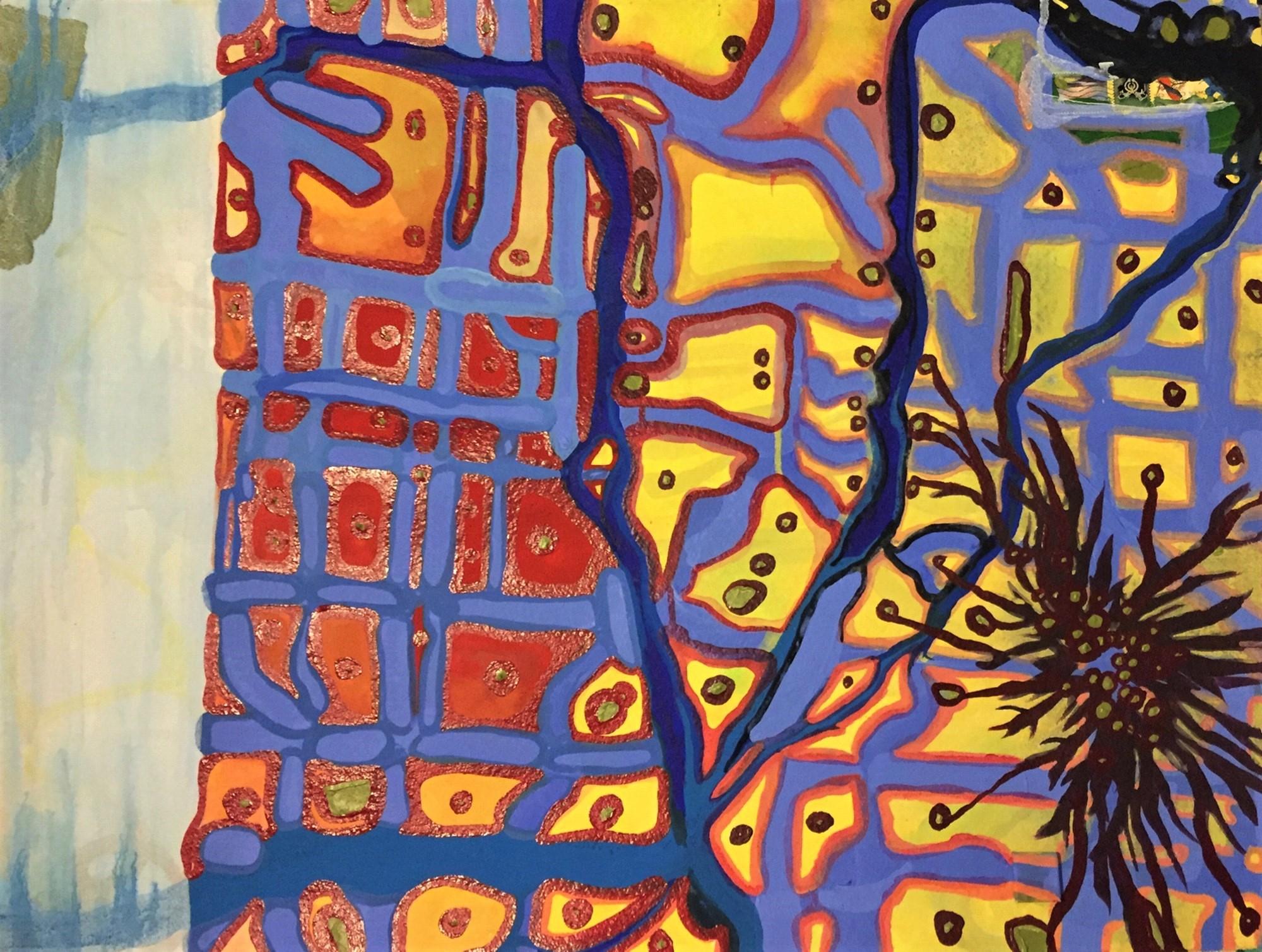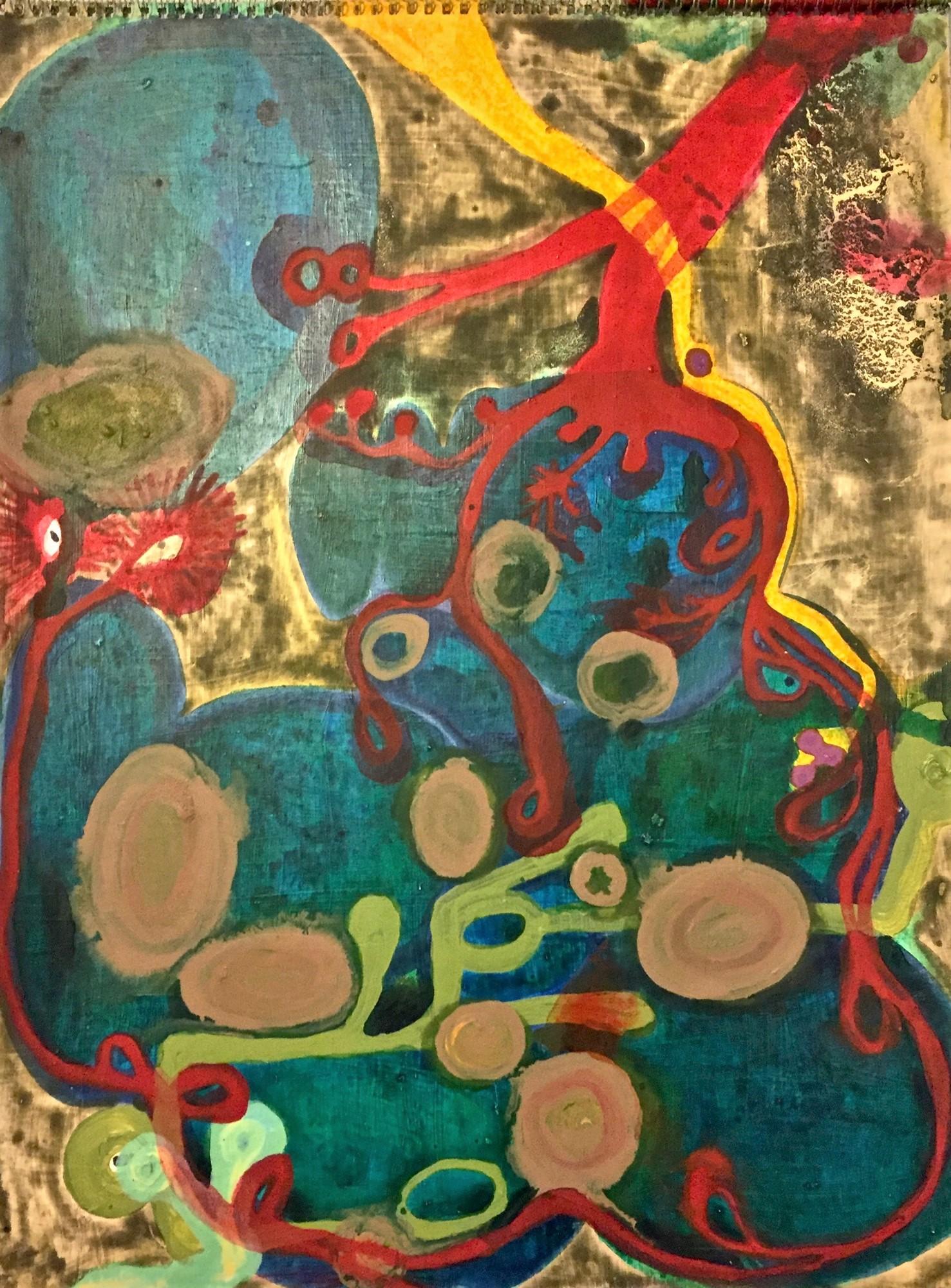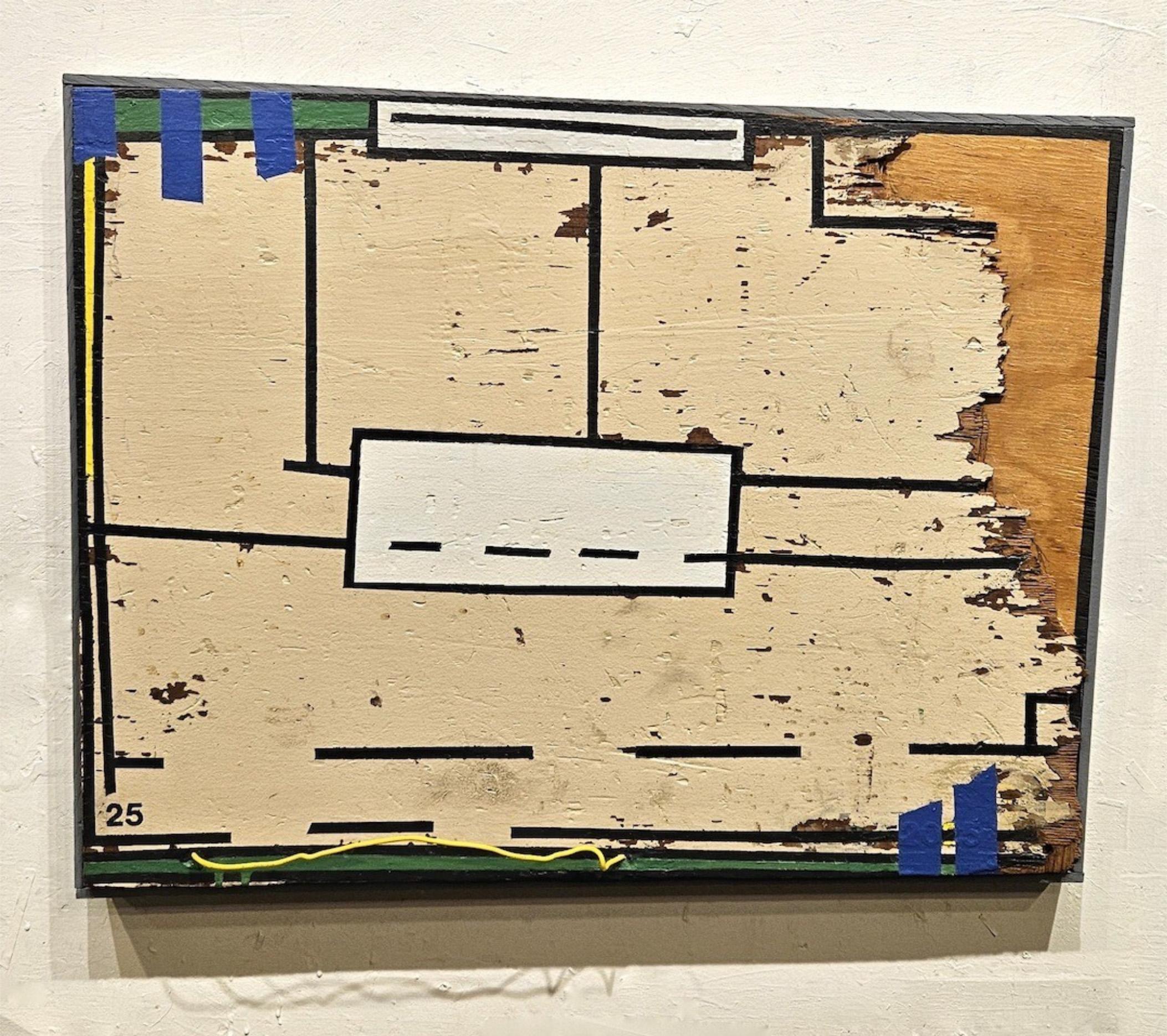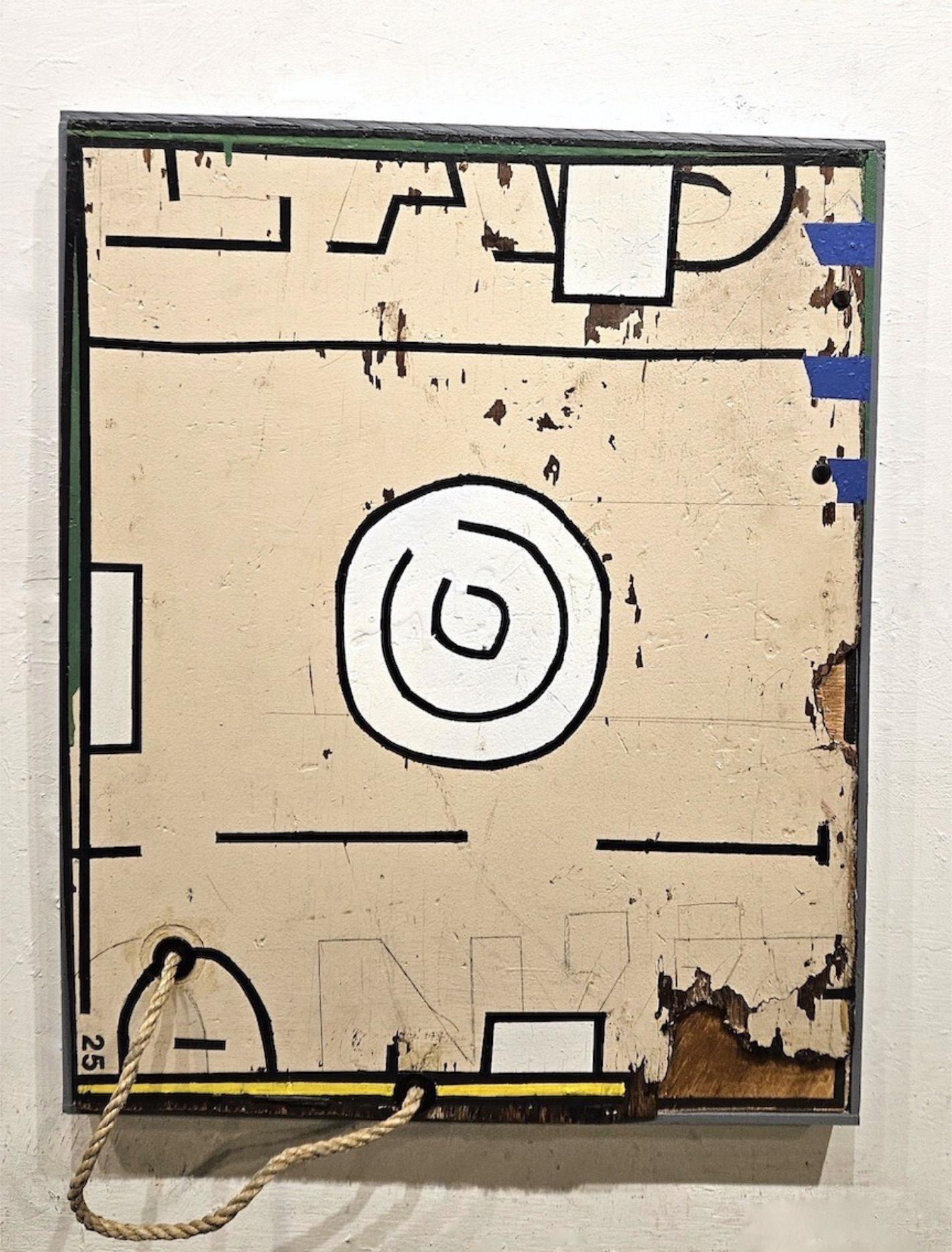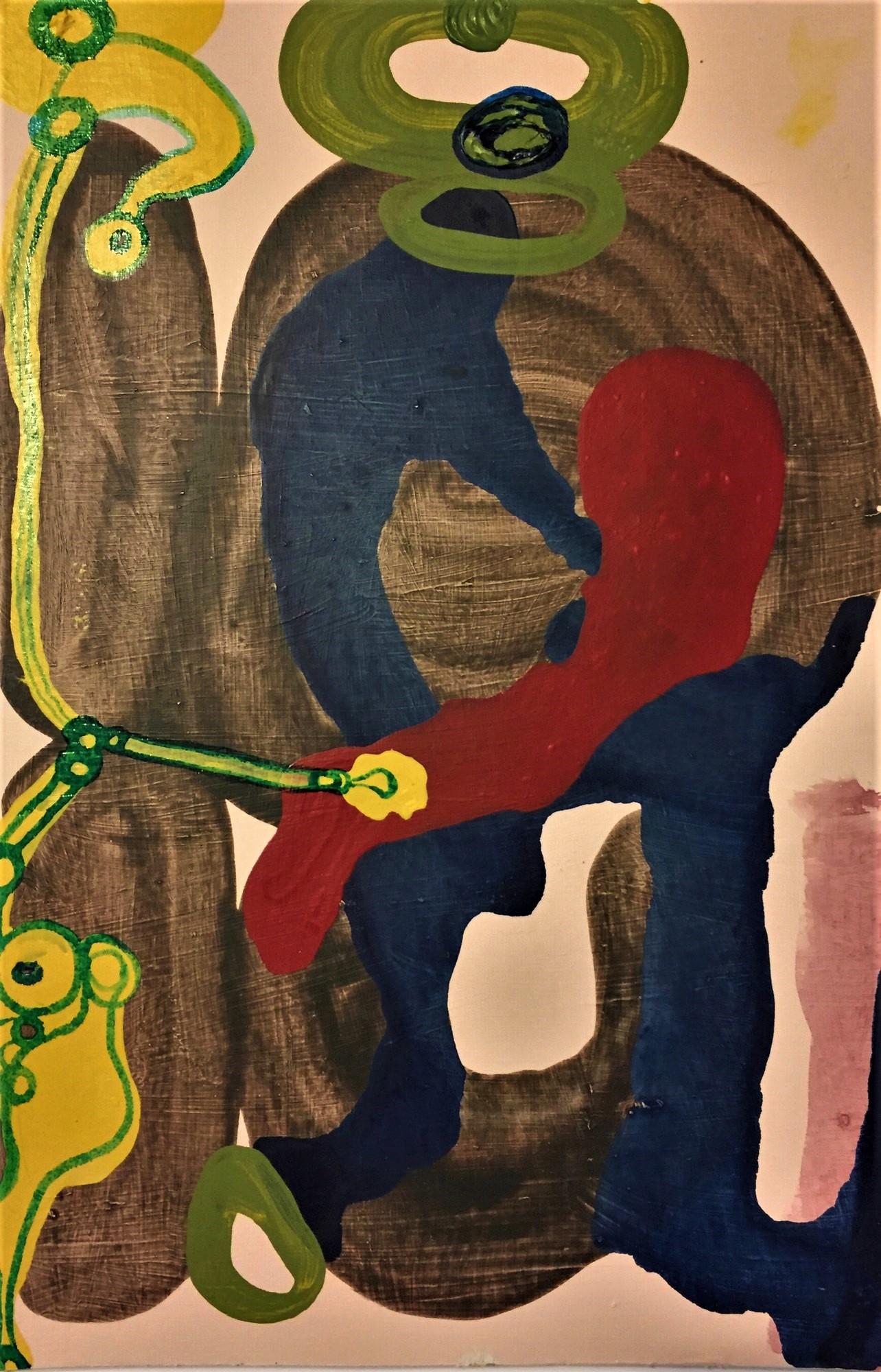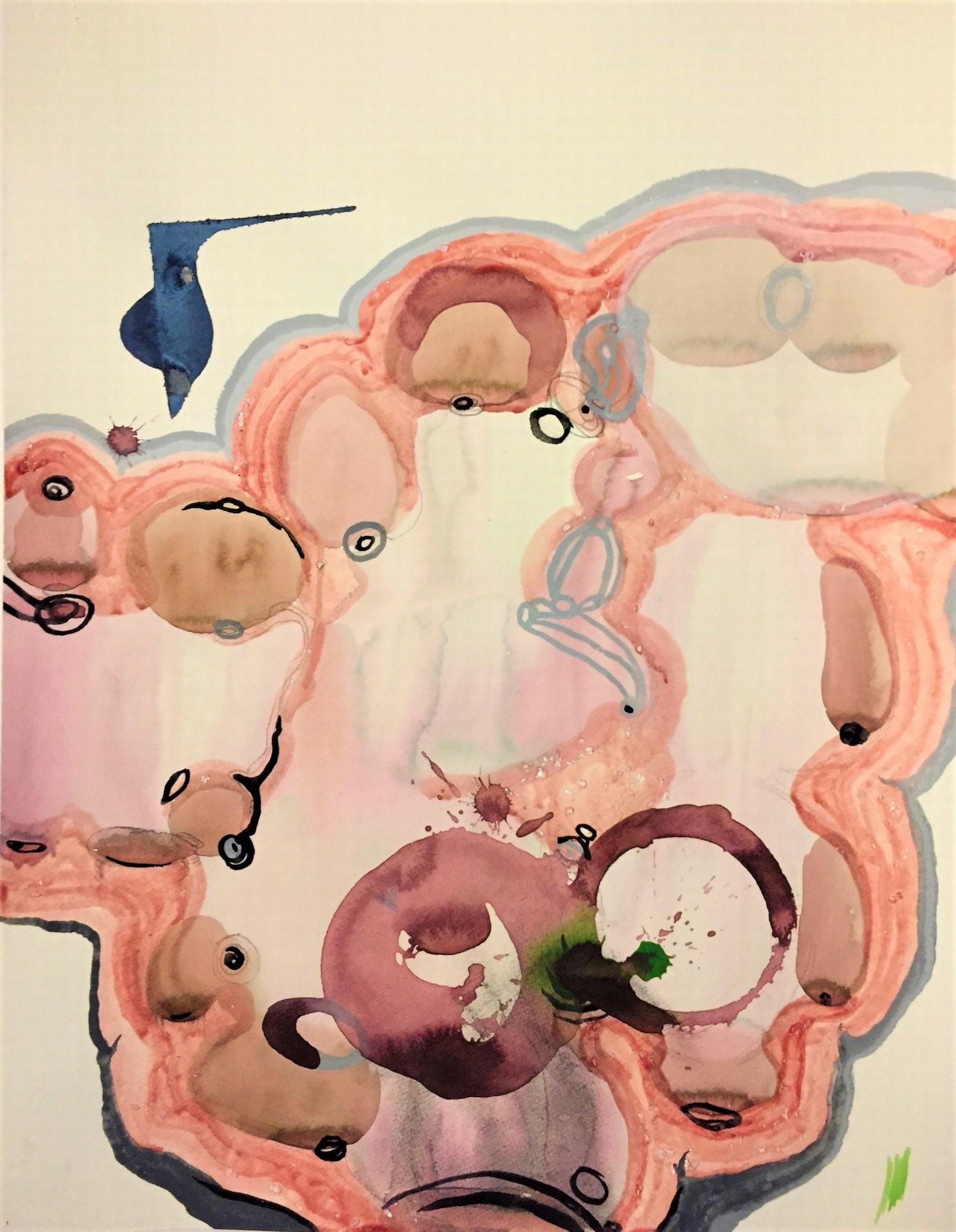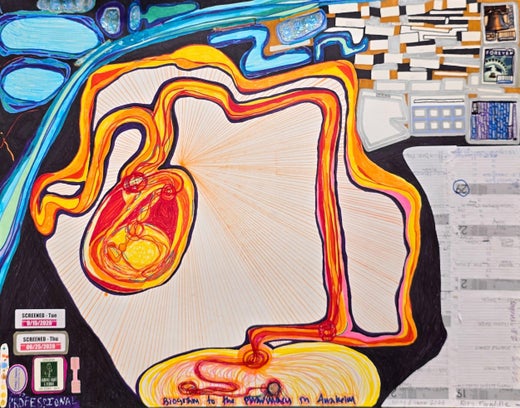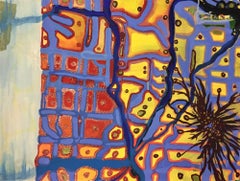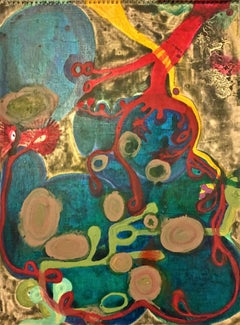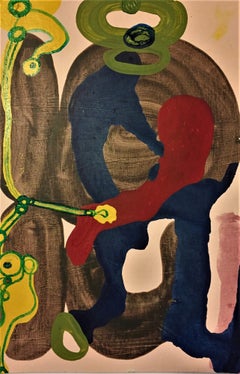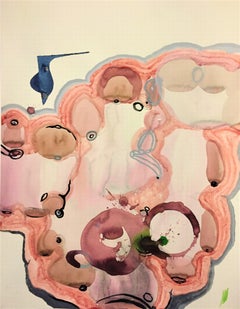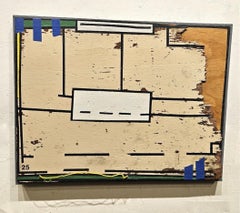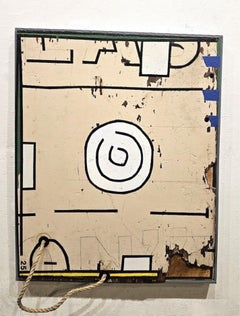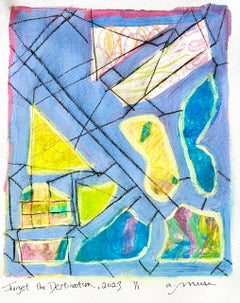Kory TwaddleBlue Springs Semi Upper Level2010
2010
About the Item
- Creator:Kory Twaddle (1979, American)
- Creation Year:2010
- Dimensions:Height: 36 in (91.44 cm)Width: 24 in (60.96 cm)Depth: 0.1 in (2.54 mm)
- Medium:
- Movement & Style:
- Period:
- Condition:
- Gallery Location:Kansas City, MO
- Reference Number:Seller: KOT_1907_0221stDibs: LU60834863371
Kory Twaddle
Kory Twaddle is a Kansas City-based artist and Research Assistant at the Nelson-Atkins Museum of Art. Twaddle explores her own lived experiences and her body’s interactions with space as subject matter for her Biogrammatic work, in which she seeks to give physical presence to her ethereal encounters with the external world via lived diagrams. Twaddle's bio grams are records of the lived moment of specific periods and particular spaces of her own life.
- ShippingRetrieving quote...Shipping from: Kansas City, MO
- Return Policy
More From This Seller
View All2010s Abstract Geometric Mixed Media
Paint, Paper, Conté, Charcoal, India Ink, Acrylic, Tempera, Watercolor, ...
2010s Abstract Impressionist Mixed Media
Color Pencil, Graphite, Paint, Pencil, Newsprint, Cardboard, Watercolor,...
2010s Abstract Expressionist Mixed Media
Paint, Paper, Conté, Charcoal, India Ink, Acrylic, Tempera, Watercolor, ...
2010s Abstract Expressionist Drawings and Watercolor Paintings
Conté, Permanent Marker, Oil Pastel, Paint, Graphite, Watercolor, Temper...
2010s Abstract Expressionist Mixed Media
Color Pencil, Graphite, Paint, Pencil, Newsprint, Cardboard, Watercolor,...
2010s Abstract Drawings and Watercolor Paintings
Paint, Paper, Conté, Acrylic, Tempera, Watercolor, Color Pencil, Graphit...
You May Also Like
2010s Abstract Geometric Mixed Media
Metal, Enamel, Wire
2010s Abstract Geometric Mixed Media
Metal, Enamel
2010s Abstract Abstract Prints
Ink, Gouache, Rag Paper, Monotype
Late 20th Century Abstract Geometric Mixed Media
Mixed Media
Late 20th Century Abstract Geometric Abstract Paintings
Paper, Gouache
2010s Abstract Abstract Prints
Ink, Gouache, Rag Paper, Monotype
